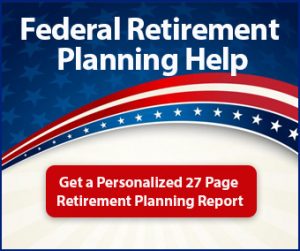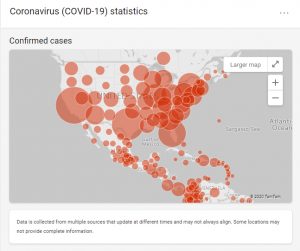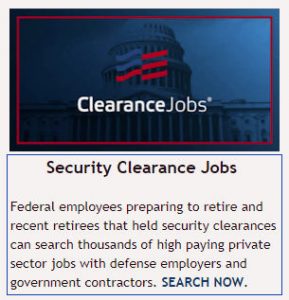Posted on Saturday, 20th February 2021 by Dennis Damp
 Print This Post
Print This Post
Mary and I are scheduled for our first COVID 19 vaccinations on March 4th. Our local health care provider set up an online registration process this month and we were able to schedule both shots. We are still apprehensive about the potential side effects considering the rumors circulating online. However, many have already received their shots without incident including our daughter, a certified respiratory therapist, and others we know.
Auto Insurance Savings
This past year we put less than 10,000 miles on our two cars and SUV primarily due to the pandemic. I received an advance notice from our auto insurance carrier last month advising us of the upcoming renewal and the new premium. The premium was the same as last year. I’m sure many reading this column experienced the same thing and found this disconcerting. Insurance company’s liability decreases as many of their clients are working from home and there really isn’t anyplace to travel to.
I spent the next week obtaining quotes from four other companies. Several companies have new plans that base their premium on miles traveled and safe driving practices. Nationwide provided the best quote for what they call their Smart Miles program. The premium consists of two parts: a base premium and a variable mileage premium (Cost Per Mile). To determine the cost per mile monthly premium, a GPS tracker must be installed on each of your vehicles. It plugs into the service port under the dash. They also offer a Smart Ride program that extends monthly premium discounts based on 4 factors: miles driven, hard braking and acceleration, idle time and nighttime driving.
The Nationwide quote was almost 30% less than the quote we had from ERIE, our carrier. I called ERIE and advised them I was seeking a lower rate due to the reduced mileage we traveled last year; they offered to lower our annual premium significantly.
Both quotes were competitive however I decided to stay with ERIE Insurance since they didn’t require GPS tracking and have a decreasing deductible. For each year that you don’t have a claim your deductible decreased by $100. Most insurers have certain safe driver incentives that you should consider before changing to another company. Our original deductible was $500 and was now only $100. I was able to get an additional premium reduction by increasing my deductible to $1,000; after applying their decreasing deductible adjustment, it would only be $600 for the current year. I also removed other small charges they had for income loss and dropped the rental car option. In the past I kept the rental car option on two vehicles for the entire year not knowing that I could simply add the rental option to the car we were vacationing with for that period of time.
Another way to save when you own multiple cars is to take advantage of their lay-up service. If you don’t drive one of your cars during the winter months or one of your cars won’t be used for three months, insurance companies will reduce your coverage on that car to the bare minimum. Thomas Butts, our local agent, and his staff were very helpful.
I also discovered that at first glance many of the competitive quotes I obtained were less until I closely compared benefits. In Pennsylvania you have the option of full tort or limited tort coverage. Most quoted the lower cost limited tort. I insist on full tort coverage which allows the victim to file a claim for all damages, including medical costs, lost wages, as well as noneconomic damages such as pain and suffering. It took me some time to decipher each quote to compare apples to apples so to speak.
New Computer – Solid State Drive (SSD) Benefit
I upgraded to a new Dell laptop last December and purchased one with a 128 GB solid state drive (SSD) and a 1 TB hard drive. I reluctantly spent more for the SSD and was pleasantly surprised at just how fast the laptop starts up compared to hard drive systems. The SSD (C) drive stores the operating system and most of the primary software such as Microsoft Office, virus protection, browsers, and others. Everything else, including all data files, are stored on the (D) hard drive.
The laptop starts up fast and you can start searching with a browser or open programs in less than 10 seconds, it takes up to 3 minutes or more on a hard drive system before everything initializes and is able to run without incident. If I had it to do over again, I would have purchased one with a larger SSD, mine is about two thirds full and I have to be careful when installing new programs to ensure they are stored on the hard drive. SSD laptop prices are falling. However, the manufacturers are dropping the hard drive unit costs substantially to reduce their inventory. Solid state drives are worth the additional costs from my perspective.
One perplexing fact when buying a new laptop is that most if not all of the 15” display units don’t come with a DVD read/write drive. I decided to purchase the 17.3” display model that still includes this feature. Otherwise, you have to buy an external DVD which is inconvenient to say the least.
Helpful Retirement Planning Tools
- Retirement Planning For Federal Employees & Annuitant
- GS Pay Scales
- Budget Work Sheet
- Medicare Guide
- Social Security Guide
- Master Retiree Contact List (Important contact numbers and information)
- 2021 Leave and Schedule Chart (Use this chart to set target retirement dates.)
- Annuity Calculator (FREE Excel chart estimates annuity growth)
Disclaimer: The information provided may not cover all aspect of unique or special circumstances, federal regulations, medical procedures, and benefit information are subject to change. To ensure the accuracy of this information, contact relevant parties for assistance including OPM’s retirement center. Over time, various dynamic economic factors relied upon as a basis for this article may change. The advice and strategies contained herein may not be suitable for your situation and this service is not affiliated with OPM or any federal entity. You should consult with a financial, medical or human resource professional where appropriate. Neither the publisher or author shall be liable for any loss or any other commercial damages, including but not limited to special, incidental, consequential, or other damages.
Posted in FINANCE / TIP, LIFESTYLE / TRAVEL, RETIREMENT CONCERNS, SURVIVOR INFORMATION
Comments (0)|  Print This Post
Print This Post








